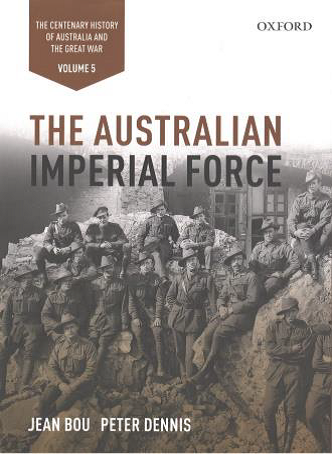This is the final volume in this impressive series. It has maintained the high quality of research, documentation and presentation encountered in the previous four volumes series. Its subject is immense, and it has been examined in a logical and detailed manner that permits the most avid of military historians to be totally sated, whilst enabling other readers to choose to examine the Australian Imperial Force (AIF) to whatever extent they may desire.
The purpose of The AIF is to gather together the masses of information available from a considerable number of previous writings and unite this with the latest AIF database created by the University of New South Wales at the Australian Defence Force Academy. The (stated) ages of those who sailed in the First Convoy to Egypt and the monthly enlistments by major religious denominations for the four years of the War are only two examples of very accurate statistical analyses contained in the many tables found in the text or as appendices.
The concept of a force of 20,000 Australians going to Britain’s aid was the genesis of the AIF (authorized in the Commonwealth of Australia Gazette on 15 August 1914). Its actual composition by unit, by (state) military district is presented, and the ad-hoc state-by-state enlistment procedures and acceptable standards had to be quickly replaced to obtain the necessary degree of uniformity. Enlistment, medically examining, issuing uniforms and arming recruits was initially slow and tedious due to no systems or existing resources being in place.
Changes in establishment/organisations in the early period of the war was necessitated by a need to conform to the British model, as well as Australia not being able to replace battle casualties and keep units at their initial strength. The prime example was reducing an infantry battalion from eight rifle companies to four. Additional infantry and light horse brigades were formed as recruits came forward. The history of their establishment and the ensuing divisions is extremely well documented as is the command and control structures in place. The additional troops that rounded out the AIF as ‘corps troops’ and enabled it to function as a fighting force are given quite adequate coverage. In excess of 330,000 men were sent overseas, and the argument as to whether the AIF became too large and beyond the capacity of Australia to effectively sustain is examined.
It was some time before Australians eventually commanded their own divisions, and only in 1917 and 1918 did Chauvel and Monash became corps commanders. The first commander of the AIF and the First Division was Major General William Bridges. On Bridges’ death in May 1915, Major General Legge assumed command of the AIF, but he was quickly removed to Egypt a month later. This saw Lieutenant General William Birdwood command the AIF until 10 September 1920. Perhaps the unsung officer of the AIF’s existence was Major Brundell White. It was his 1912 ‘study’ that formed the basis of the raising of the AIF, and he saw the War out as the AIF chief staff officer to both Bridges and Birdwood. His meticulous planning underpinned the successful Gallipoli withdrawal in December 1915. He was prepared to forgo promotion to battle units as he felt he could serve the Australian cause better in its senior headquarters.
Conditions of service for combatants – pay, pensions and leave, discipline, crime and punishment, prisoners of war (numbering 4044) and the provision of medical care is worthy of more than 20 percent of the text. The last three areas examined are those of training reinforcements both in Australia and overseas (out of theatre), the demobilization at the end of the conflict and the AIF legacy to Australia and its society. [As a teenager, I cycled through former WWI soldier settlement vineyards in Birdwoodton (NW Victoria) en route to my Under 16 cricket club’s ground.] White started work as early as 1916 on demobilization, because men had enlisted for ‘the duration of hostilities and six months beyond’. By 1919 there was an AIF-wide education scheme to equip men for a return to civilian life. The first Appendix is devoted to the massive efforts to keep complete records of AIF personnel.
This volume does a great deal to complement existing writings on The Great War. It has been extremely thoroughly researched, and where necessary comments upon any potential ambiguities or conflicting reporting of the same event. The embedding of comprehensive detailed tables in the text enables the reader to quickly grasp what text would take many pages to describe. It contains high quality photographs, four maps, a bibliographic essay, endnotes and a comprehensive index. The AIF is an excellent ‘book end’ to this remarkable series.
Reviewed by Neville Taylor, July 2016 for RUSIV

Contact Royal United Services Institute about this article.






